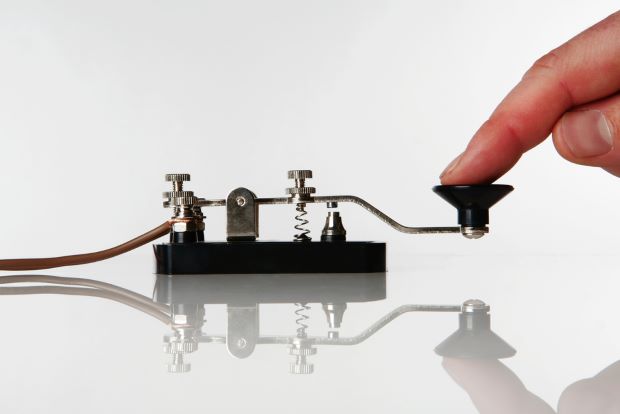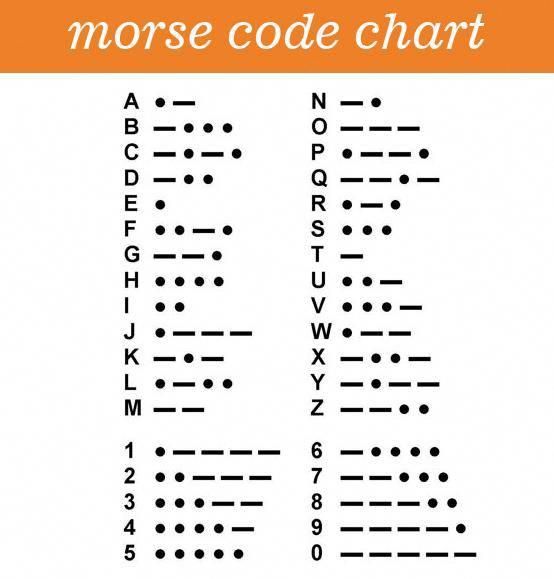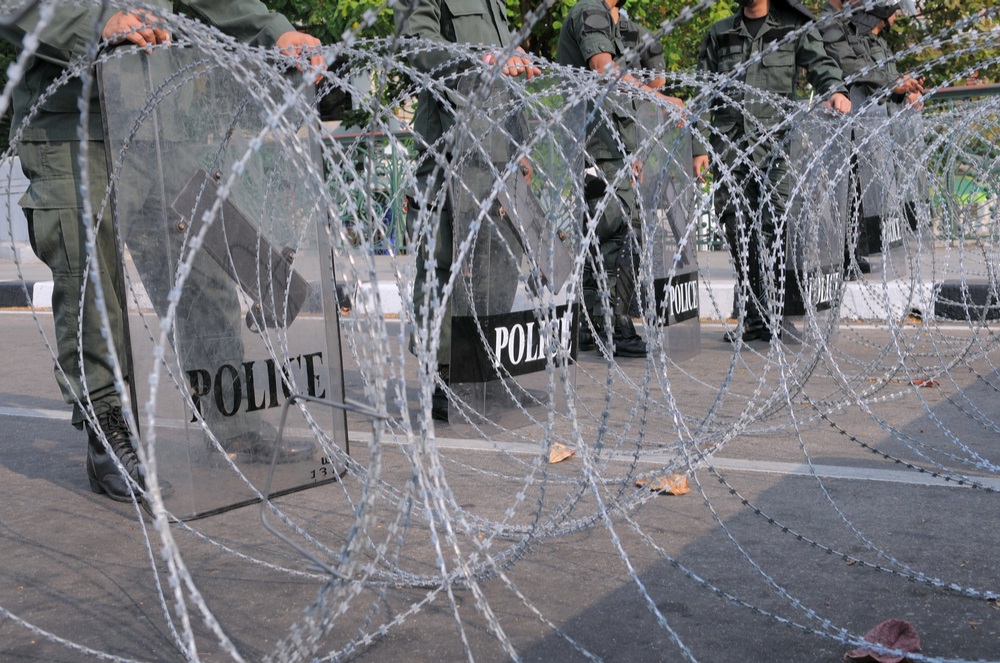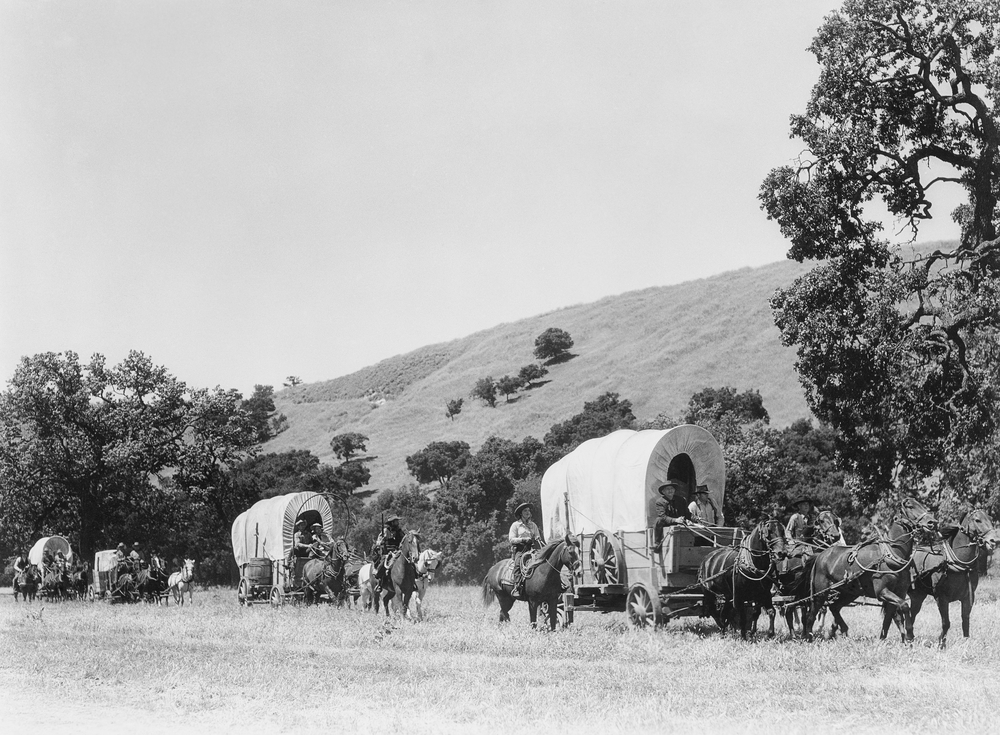In a natural disaster, civil unrest, or other public emergency, being able to communicate up to 5 miles or more is very important.
When there isn’t a working cellphone system or the internet is unavailable, it can wreak havoc. People that take their phone everywhere, or rely on it for all forms of contact with other people will be at a serious disadvantage. Sadly, as we have seen already in some disasters, these individuals can and will mentally shut down or be unable to function at all.
While many people today take their cell phones and internet access for granted, there are other effective ways to communicate in an emergency. Here are some older ways of communication that you should learn how to use.
Types Of Non-Cellular or Non-Web Radios and Phones
Many people today think of radios only in terms of their capacity to receive signals. While this is important for obtaining timely information in a crisis, there are other radios that you can use to transmit information to others that have a compatible receiver.
- Ham Radios – This is the best radio to use for any type of post disaster communication. Ham operators are regulated by the FCC, user must have a valid license. These radios can be used to communicate with anyone around the world. FEMA uses these radios to pass on vital information during emergencies and broadcast information to hospitals, shelters, police stations, fire stations and other emergence services.
- CB Radios – Even though they aren’t as popular as the use to be, CB radios are still used by truckers and other commercial drivers. The range of the radio depends on whether the transmitter is located in a base station or a mobile unit. Base stations have a longer broadcasting range than mobile units. CB radios must also be licensed by the FCC in order to operate. The average broadcasting distance is between 25 and 50 miles.
- Walkie-Talkies – These are short ranged, hand held, battery powered radios that can be used for emergency communications. Depending on the broadcasting power they may have a range of 1 to 10 miles.
- Hand Cranked Radios with AM, FM, And Short Wave Channels – Although these radios can only receive, they are a big help in getting good reliable news and weather reports. The nice thing about this radio is that it doesn’t need batteries. It uses a crank generator to supply the needed electric power.
- Satellite Phones – These phones work during disasters because they work through satellites instead of cellphone towers. They will work without interruption unless the satellites are jammed. They are expensive to buy and may not work in some situations that would not stop a Ham radio.
- Land Line Phones – Most of these phones are obsolete by today’s standards. There are still a few around in big cities and small towns. If you can find a working phone in a disaster, they are much more reliable than cell phone networks. Be sure to have some change, in case you find a pay phone.
Codes and Why You Need to Learn Them
In a major crisis, there may be times when you will not be able to transmit information using voice and words. Instead, you may have to tap out sounds, or use a series of light flashes to communicate important information. Here are two code systems that will be well worth learning. They can be used with anything from drums to flashlights and mirrors as well as for communication over electronic networks.
Morse Code
Was invented by an American Samuel F.B. Morse, and first used in 1844. It is a relatively simple code that turns letters, numbers, and punctuation into a series of dots, dashes, and spaces.
The most important advantage of Morse Code is it’s ability to be used in almost any circumstance. It works as long as it’s possible to make a signal of some sort. Morse Code is usually transmitted by on-off keying of an information carrying medium such as electric current, radio waves, visible light, sound waves, and signal flags.
Morse Code was used extensively from the Civil War through Vietnam, and was also the standard format for ocean communications until the Global Maritime Distress Safety System replaced it in 1999. Most people will tell you that Morse Code is obsolete, and no longer worth learning. As a prepper, however, you may appreciate the following advantages:
- It is possible to transmit using little more than a wire antenna, some simple electronic parts, and a few small batteries.
- Morse Code signals can be sent over much longer distances with a lower power requirement than voice messages.
- When nothing else works, Morse Code will work.
- It’s much easier to filter out background noise and hear weak signals.
- Since it is obsolete, there is a chance you can send messages that unintended listeners may not be able to decipher. That being said, an additional layer of encryption would also be helpful.
5X5 Tap Code
This code was originally used as a way for prisoners of war, penal incaceration, and others to communicate with each other without individuals outside group knowing what is being said. It’s a short range communications system that only travels the length of the medium being sent on.
5 x 5 Tap Code is similar to Morse code in the sense that alphanumetric characters must be translated into a system of taps. The sounds can be made by tapping on anything available such as pipe, metal bars, the walls of a room or cell, or any object that can transmit the tapping. It can also be used with a Morse Code on-off sending key.
The code itself uses a square to make a 5×5 grid of letters in the English alphabet. Since the alphabet has 26 letters, C and K are both located in the top row third column spot to avoid an uneven grid.
In order to interpret the message, a listener must be able to gage the timing of the taps.
How To Use The Tap Code
To use this system each letter is identified by tapping two numbers.
- The fist number designates the position in the down row, and is followed by a short pause.
- The second number designates the column number, and is followed by a longer pause.
- The letter X is use to break up sentences.
- The letter K is used to acknowledge the message.
- You can expect abbreviations in order to reduce the amount of time required to send the message.
As an example, to specify the letter “O” tap three times, very short pause, then tap four times, and a little longer pause.
To Spell Out The Word “HELP” In The 5X5 Tap Code
H E L P
2,3 1,5 3,1 3,5
.. … . ….. … . … …..
Other Methods of Communicating Over Long Distances
Aside from instantaneous transmissions, there are also other methods that will take more time. Most of these rely on the use of animals. These methods can be used during or after an EMP as well as other situations where no electricity or electronic transmissions are possible.
Homing Pigeons

To use homing pigeons, your transmission point will be to a pre-set location that the pigeon has been trained to return to. When you need to send messages, just place the message in the pigeon’s message case and strap it to the pigeon’s leg, then let the pigeon go.
Homing pigeons will go straight back to their cage location. They will not make side trips or divert from the course that will get them home. Surprisingly, a homing pigeon can travel faster than a car over short distances. Unless people are looking for homing pigeons or notice the message case, it is not likely the bird will be intercepted.
Despite their advantages, there are some limitations to using a homing pigeon. First, they can get lost. Predators can also capture and kill them. You may need to send multiple birds with the same message, especially if they are going through a dangerous area.
Horseback Pony Express Type Mail/ Communication Carriers Or Mule Trains To Carry Mail
Today, just about everyone takes text messaging and emails for granted. In a major emergency, you may have to go back to paper letters. Even the post office or other mail carriers may have to rely on animals such as horses and mules to carry mail from one location to another.
Where we use trucks, trains, and planes to carry mail at varying speeds, this type of system might use relays of horses and couriers for express mail. Other mail and packages might be placed on freight wagons and then dispatched to local carriers.
Before the arrival of cell phones and the internet, people were able to communicate with varying levels of speed and efficiency. In time of need, we can use these older systems to transmit and receive vital information. The important thing is to remember how these systems work, how to set them up, and how to use them.











-Jed | January 6, 2020
|
CB is covered under Part 95 of the FCC rules. A CB radio does not require a license to operate. … For the most part, you can operate a CB radio on all 40 channels and frequencies designated by the FCC for CB, but there are some caveats. First, you can use CB only on those 40 channels and frequencies.
Captain Obviouse | October 23, 2020
|
When SHTF FCC rules no longer apply for CB or HAM radio….. Lol
Len | December 29, 2020
|
This is correct, and “emergencies” are even included in the rules. The problem is, without some training your equipment will likely not survive, you will never be able to use morse code, and the first EMP will take out your best gear. Without knowledge of propagation, its unlikely you will ever make a contact, you also need someone to talk to!
As far as I know there is no Militia Short Wave Net operating, and the lawless left would play their usual games. if there were.
Tactical operations are most likely the domain of FRS radios which are inexpensive and perform well at short distrances, but don’t think for a second you will be coordinating air attacks in Europe with a Morse Code Key. The real world is not the Armageddon Movie. Communication is a difficult task which is why there are specialist assets assigned to the task in the military.
TruthB Told | January 6, 2020
|
Other ways:
1. Smoke signals
2. Drums
3. Yelling really loud.
4. Heliograph
5. Two cans attached by a string
6. Horns or Trumpets
7. Large painted signs
8. Fed. Ex.
9. Sky writing
10. Talking to each other face to face
Len | December 29, 2020
|
Good list, but realistically you ignored codes and ciphers which are useful with everything from paper and pencil to computerized short wave stations.
LJ | January 6, 2020
|
So, you may want to include in your non-emp proof supplies, all of the parts needed to make a chrystal radio, a spool of wire for the antennae and the D cell batteries to power it. You also will want the printed instructions for building it.
broadcastdude | January 7, 2020
|
Chrystal radios do not use or need batteries. The energy they use comes from the radio station itself. Of course amplifiers that do use batteries or other sources of energy can be added to increase range.
lc65 | January 7, 2020
|
Ctystal radios are receive only – do not transmit – therefore the energy comes from the transmiier and your antenna picks it up– HOW COOL !
You can buy them in kit form online – pretty cool science experimentt for kids of all ages.
Len | December 29, 2020
|
They are also very fragile, and subject to EMP, so once you figure out how you make one, it would be good to have some extra diodes set aside in your EMP box, and you will need plenty of wire for the antennas.
Bill in Idaho | January 7, 2020
|
Interesting Article, Fred. I Did enjoy reading it – brought back some fond memories.
lonewolf | January 7, 2020
|
communicate? with whom?
Captain Obviouse | October 23, 2020
|
With people… You obviously have a basic need to communicate for one reason or another or you would not have even posted a comment on this thread. Thinking your super survivor but not…
Henry M Niedzwiecki | January 7, 2020
|
When an EMP hits, what happens to the antennae that are used to put out the signal coming from the radios?
you will need a new antenna,
VA3ROD | October 12, 2020
|
An EMPLOYEE won’t destroy the antenna, it’s a passive component. The EMPHASIS will destroy active components in the 1st rf amplifier, 2nd rf amplifier, local oscillator, 1st & 2nd intermediate amplifiers, detector, and the audio amplifier stages. And any regulator in the power supply. All the stages in a transmitter will also be shot by the EMPLOYEE.
Len | December 29, 2020
|
No, the antenna is just wire, and probably will survive the EMP unless its from the sun and large enough to melt the wire. The bigger problem is the energy required by the Transmitter and the complexity of the AM broadcaster’s equipment, the fact that they are not likely to be hardened, and you are relying on non-technical people who know nothing to keep the station on the air. The most critical element is the diode, which the EMP will destroy. Wire for a replacement antenna can come from an old transformer. The diodes will need EMP proof storage.
Richard | January 7, 2020
|
If there is a postal service, write a letter or postcard. Write a message on a piece of paper and leave it in a dead drop. Use stones, sticks, branches, or blaze to mark a trail. IEDs are commonly marked with a can, piece of cloth, stones, and so forth. Paint. Chalk mark. Whistle or bell. Three gunshots or whistle blasts. Hand signals. Blinking lights. Blind people use braille. Light or shade pattern in a window. Razor wire means, “keep out!”. Symbols like Christian Cross for church, the crescent moon for Islam and mosque, and 6=pointed star for Jewish Synagogue. In the outdoors, use a string and a can with rocks to announce visitors. Following a disaster, there are standard marks to indicate that a building has been checked.
SCOTT WOMAC | January 8, 2020
|
I wanted to point out that CB Radio does NOT require a license since around 1980, and are limited to 4 watts output power. This means their normal maximum range is just around 5 miles,. Occasionally, the atmospheric conditions will be such that you can talk on what is called “skip”, (because your signal skips, or bounces between the sky and earth) which can increase your range to a few hundred miles,or more! It is illegal to talk further than a few miles on CB, but people still do it, usually with illegal amplifiers and giant antennas.
Dennis Shaw | January 10, 2020
|
I started using CB radios back in the mid-70’s, during its heyday. I went to trade school for electronics in 1976, and every student had at least one CB. We challenged each other to see who could get the longest range out of their setup, without breaking the rules (such as using an illegal high-powered transmitter). Hams (Amateur Radio Operators) do the same thing with just ONE watt of power. Using Morse Code instead of voice, it’s possible to communicate over thousands of miles.
True, a CB transceiver (transmitter and receiver combined into a single unit) is limited to “4 watts as measured at the antenna connector on the back of the radio.” However, the range is determined by several factors: terrain (line of sight), weather (clouds), quality of device connections, and especially the antenna (design, height, and connection cable length). A “mobile” antenna (mounted on an automobile) is sized more for convenience than efficiency. A handheld transceiver is even more limited because of its compact antenna. The maximum range can be achieved with a large “beam” antenna mounted on a high tower. This type of antenna is more directional, so it is advantageous to use a rotor to turn the antenna to the desired direction. Best case scenario is upwards of 25 miles, although I’m able to converse with another optimized base (home transceiver) 40 miles away.
Also, an SSB (Single Side Band) transceiver has a power output of 12 watts. Considerably more than the 4 watts of a standard CB. However, it can only communicate with other SSB transceivers in SSB mode.
VA3ROD | October 12, 2020
|
Mr. Shaw, a very nicely written endorsement of CB .radio. in Canada we call it the General Radio Service or GRS. Equipment must be approved for use in Canada, in general, the technical aspects rules are same as in USA.
DotCat007 | October 12, 2020
|
The statement regarding “crank radios” not needing a battery is untrue. The crank in these radios turns what is a tiny generator inside the radio, which generates an electric charge that is then used to charge up a storage device (battery) that is also inside the radio. Most of these types of radios also include the ability to utilize “regular” AA or AAA batteries as well. Those can be of the alkaline (non-rechargeable) or rechargeable type (utilizing a separate charger). Many times the “crank-rechargeable” battery in these radios is of a proprietary type and thus not easily replaceable should it/they fail. It pays to try to find out this information before investing in these radios.
JohnnyRoger | October 12, 2020
|
I find it hard to believe that, during a SHTF event, the FCC would have the ability or desire to seek out and issue citations to rulebreakers.
Richard | October 13, 2020
|
Hi Johnny,
Depending on how tight your “tin foil hat band” is, you can ignore the FCC rule enforcement guys but you might want to think about other government monitoring. Look here: https://www.fcc.gov/over-air-spectrum-observation-capabilities. That page is from 2018. Note Homeland Security. Please also consider that the military and many other agencies have the ability to monitor and perform direction finding on virtually all radio frequencies. During the Vietnam era armored personnel carriers were configured with receivers and transmitters that operated up into the police and air traffic radar frequencies. Why? Suppose that the Army is operating in a combat zone and the bad guys are using radios to coordinate. Wouldn’t it be nice to deny them that capability? Maybe they are using a satellite for tactical communications or to control UAVs. Suppose we transmit a big signal on its inbound freq and deafen it? If you are thinking that everyone will be using CB so it will be hard to spot you in all that noise – “security through obscurity” is not a good bet. Thinking about encoding your communication? A lot can be discovered and known just by knowing who is sending and from where. – it is called traffic analysis and it was used by NSA (and LOTS of other people) to learn about people exchanging encrypted emails. Think about that for a minute and you will remember who did that about 5 years ago. Nobody will care about your laundry or grocery list unless they think that “socks” are your code word for “pistols”. Then it can get sporty.
R Mikesell | October 12, 2020
|
The crank in a crank radio is used to rotate a small internal electrical generator. The electricity generated needs to be STORED to be useful, hence there IS a battery to receive and store the generated electricity. In most of these radios, there is also the ability to use regular AA or AAA batteries – whether rechargeable or not. The crank will not recharge those batteries, this must be done using an external charger. The batteries in most of these crank radios, I have noticed, are proprietary and not easy replaced, if at all. It pays to do a little investigation and education before purchasing these radios. I do have several of them, as they do serve a purpose.
Thomas Cucchiara | October 13, 2020
|
I am truly amazed that no one has mentioned MESH phones! These are phones that operate on the UHF band. While their range is, short, when linked, together, they can cover hundreds of miles! No talking but, (encrypted) texting is sent to other MESH phones many miles, away. Also, they have the added ability to send & receive crypto currency by use of a wallet that is available for use with the phones. Price is, very, reasonable @ $134.00/pair. Upgrade versions are designed for use by police,fire,EMT’s & other first responders & include a GPS feature that is excellent for rocky or, mountainous terrain. For more info, go to: Gotenna.com. You’re, welcome, from a former Boy Scout!
Eric Miller | October 13, 2020
|
Although I know the Morse code well, I can see the advantage of the tap code. It must be the way trapped miners and submariners communicate.
Richard | October 13, 2020
|
Tap Code, originally used by prisoners – perhaps most famously in the Hoa Lo prison, the “Hanoi Hilton” during the Vietnam War. Used to be taught to people who went through SERE training. I’m not in that loop – anyone know if it is still taught?
James | June 25, 2023
|
Just a reminder: If you transmit a signal, you are revealing your location to those who’re skilled at radio direction finding.
SKOBN | October 7, 2023
|
I like this article nevertheless is it possible for the tap code to be still used today in time and what About pressure applying is that a form of communication because I don’t know who my wife is communicating with however she applies pressure to certain car parts she whispers a lot as if holding a conversation she responds but denys any type of such thing she can move her hand or point a certain way and distort my phone or quickly mute herself she can wiggle her toes and you hear light popping sounds or clicks